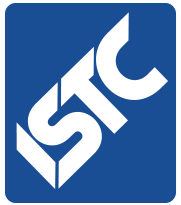This is a guest post from Claire Wood MISTC, and it reflects Claire’s personal experiences and opinions.
We hear a lot about how user experience, a design concept that has changed the way we interact with products, be they websites or apps, on a PC, but mostly on a mobile device. However, if you’ve ever had to explain to someone what a technical communicator does, and got a confused look in return, it could be they are confusing you for a user experience (UX) designer or developer. Indeed, there seems to be confusion as to what UX actually is and should cover.
What is UX?
For some, it is about the design of the user interface (UI); for others, it includes comprehensive customer research, using surveys, interviews, panels and groups. It may include “mapping” how users interact with the product, what brings them to certain decisions, and what they want from a product. For others, it’s the design (wireframing and prototype building) and testing of apps, websites and systems, with a wide variety of different tests e.g. chi-squared tests, t-tests and A/B testing, to name just a few.
Where does Technical Communication fit in?
Simply put, Technical Communicators have a general core set of skills across the whole of the UX arena. We can often research, design, test usability and deliver content for products and systems. I emphasise content, because many UX people only participate in a certain area of the product’s lifecycle. You could say we are a whole development team encapsulated in one person. For some, this might be seen as a bad thing, as the functions in development teams are often split conceptually between design generation and content generation. You find definitive specialisms e.g. client liaison & requirements gathering, design, develop, test and deliver.
However, what we do is add that lynch pin, so those teams can operate cross-functionally as well. Film goers will be familiar with the Lara Croft Tomb Raider film, starring Angelina Jolie. One scene encapsulates our role more than any other. It’s towards the end of the film, in the cavern. Lara quotes William Blake’s “Auguries of Innocence” (To see a World through a grain of sand…). She breaks “the all seeing eye key” to reveal the missing part (the grain of sand) that links the two triangles of light. That is us – that grain of sand in business teams. To remind you of the visual scenes, visit https://www.youtube.com/watch?v=NJ-Ruz334gc.
Diverse Skillsets
There are different types of technical communicators, and you may find more than one communicator in a company. Some may only manage writing and graphic design, whilst others may produce instructional video or other product marketing materials. Training can include, but is not limited to: content strategy, business analysis, including gathering and prioritising requirements, design, usability, testing, delivery, and of course, journalism and topic-based writing skills. For more information, visit Aaliya Ali’s post (http://tinyurl.com/jeqcr27) and Louise Fahey’s presentation from TCUK16 (https://lnkd.in/ddNuc3n).
Training Courses
Dedicated academic courses are, unfortunately, limited at the present time. There are online distance-learning Masters courses available through the University of Limerick and the Cork Institute of Technology. The ISTC is currently investigating how to make more ISTC accredited courses available, so keep an eye on the website for news. However, we stop short of taking on those specialisms; we just work alongside as facilitators in our own niche field.
Tasks
No two communicators are the same. For instance, in a big company you may only have to use an authoring tool to enter or edit text and graphics using a variety of tools – wikis, xml editors, and so forth. For example, in a prior role at a big company, I didn’t have to edit stylesheets or templates because they’d already been created and were being used by the rest of the writing team. My role included giving feedback to stakeholders about process and workflow improvement, as it was part of ongoing quality systems analysis, required with some quality standards in ISO/BSI/Six Sigma, etc. That could also include troubleshooting and coming up with new solutions.
In a smaller company, you may have to set up a content management system or implement authoring software from scratch. This can include defining structure and information architecture right through to the the design and writing of stylesheets.
Conclusion
Whilst User Experience (UX) is a popular discipline with more in-depth skills in the concept areas of research, design and testing, they work alongside technical communicators, not instead of them. The difference between User Experience and technical communication is that the latter focuses on delivering a good user experience through content that extends beyond the user interface. Therefore, you may see or hear us referred to by a variety of names, such as User Assistance Specialists, Information Developers, Content Developers, Content Designers, Technical Author/Writer, Instructional Designers, Software or Hardware Writers.
